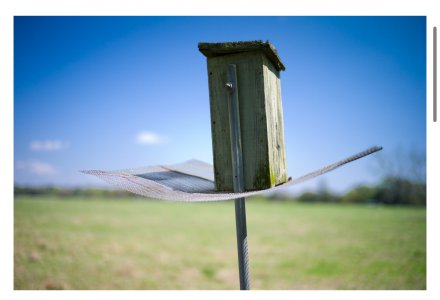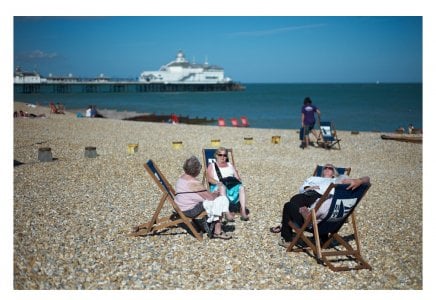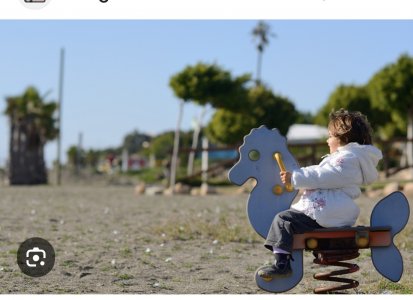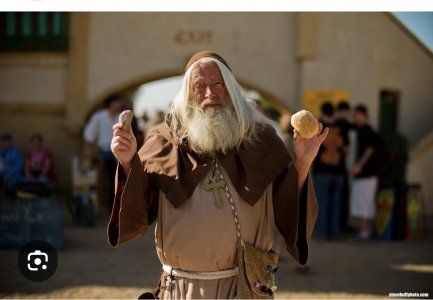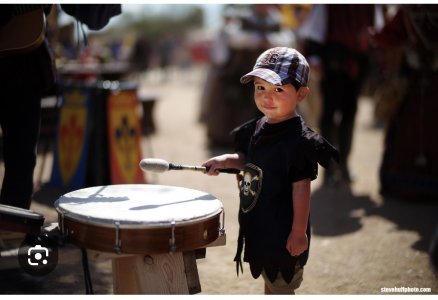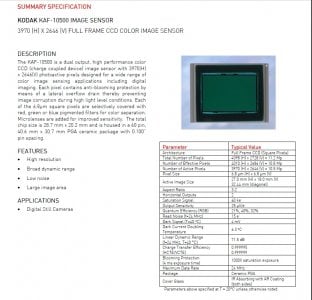Ororaro
Well-known
I was that sure of everything once. I think I was 10...
I can live with my blanket statement that f1.4 in broad daylight looks extremely unnatural. Especially if it involves 30-50x ND filters.
Any unnecessary f1.4 shot will look much better if shot at f5.6.
By unnecessary, I guess that any scene involving ND filters FORCING the use of wide open fits the description.
A
AndyCapp
Guest
You are making broad generalizations about pictures that you actually have not seen.I can live with my blanket statement that f1.4 in broad daylight looks extremely unnatural. Especially if it involves 30-50x ND filters.
Any unnecessary f1.4 shot will look much better if shot at f5.6.
By unnecessary, I guess that any scene involving ND filters FORCING the use of wide open fits the description.
Last edited by a moderator:
Used in broad daylight- a Low ISO should be fine for use with a high shutter speed and lens at F5.6. Much beyond that, with a 50mm lens diffraction starts to kick in. Once you get in to the "Super-Zoom" range, modern design depends on higher ISO.
I would rather open up the lens and use a lower ISO and get higher dynamic range than push the sensor too far. What is too far? I still think of ISO 800 as fast. ISO 6400 and beyond "Ludicrous Speed"... As in Mel Brooks movie, set ISO to Ludicrous Speed. and Damn the Dynamic Range.
I would rather open up the lens and use a lower ISO and get higher dynamic range than push the sensor too far. What is too far? I still think of ISO 800 as fast. ISO 6400 and beyond "Ludicrous Speed"... As in Mel Brooks movie, set ISO to Ludicrous Speed. and Damn the Dynamic Range.
shawn
Mentor

35mm @ f1.2 (giving almost the same FOV and DOF as 6x6 80mm at f2.8)
Ororaro
Well-known
Shallow dof looks good in the proper lighting, which is low lighting and/or interior.
Here are a few examples I found on the net (fair use), which are more about bragging wide aperture use than they are about imagery in general.
According to me, ALL those examples would have been better with a proper aperture of f5.6-f8.
The people in them are lovely, but the images as images are eyesores.
For example, the photo of the little boy is not about the little boy. It’s more about the 105mm f1.4 and the “are you jealous about my gear or what” kinda vibe.
Here are a few examples I found on the net (fair use), which are more about bragging wide aperture use than they are about imagery in general.
According to me, ALL those examples would have been better with a proper aperture of f5.6-f8.
The people in them are lovely, but the images as images are eyesores.
For example, the photo of the little boy is not about the little boy. It’s more about the 105mm f1.4 and the “are you jealous about my gear or what” kinda vibe.
Attachments
Last edited:
Ko.Fe.
Lenses 35/21 Gears 46/20
Here is no "environmental portraits", just candids.
Portrait never ever needed f1.4 and at f1 is just a lousy crapshoot with 90% been OOF, from what I have seen.
Do not mix quick crapshot under non suitable light (typical "high achievement" on nothing but gearheads forums) with the real portrait, which is always under the enough light.
Live by first class examples, not under gearheaded dross.
For example, Karsh portraits were done with theatric light setup on the scheduled location. One day they couldn't plug it in on the spot. And ... Karsh took non typical Karsh portrait, but where light was at its maximum. It came as the silhouette by the window.
And if it was no good available light, Bown would pull out the bulb from her purse. Because... back then it was possible to push film @3200 and higher, but >>>
Portraits are not about high iso in the dark, it is about having good light first- the rest is to figure out.
Portrait never ever needed f1.4 and at f1 is just a lousy crapshoot with 90% been OOF, from what I have seen.
Do not mix quick crapshot under non suitable light (typical "high achievement" on nothing but gearheads forums) with the real portrait, which is always under the enough light.
Live by first class examples, not under gearheaded dross.
For example, Karsh portraits were done with theatric light setup on the scheduled location. One day they couldn't plug it in on the spot. And ... Karsh took non typical Karsh portrait, but where light was at its maximum. It came as the silhouette by the window.
And if it was no good available light, Bown would pull out the bulb from her purse. Because... back then it was possible to push film @3200 and higher, but >>>
Portraits are not about high iso in the dark, it is about having good light first- the rest is to figure out.
Last edited:
Ororaro
Well-known
I don’t know exactly what you’re saying but usually, pros hover around f4 to f32 for portraits, depending on the format.
Here is no "environmental portraits", just candids.
Portrait never ever needed f1.4 and at f1 is just a lousy crapshoot with 90% been OOF, from what I have seen.
Do not mix quick crapshot under non suitable light (typical "high achievement" on nothing but gearheads forums) with the real portrait, which is always under the enough light.
Live by first class examples, not under gearheaded dross.
For example, Karsh portraits were done with theatric light setup on the scheduled location. One day they couldn't plug it in on the spot. And ... Karsh took non typical Karsh portrait, but where light was at its maximum. It came silhouette by the window.
And if it was no good available light, Bown would pull out the bulb from her purse. Because... back then it was possible to push film @3200 and higher, but >>>
Portraits are not about high iso in the dark, it is about having good light first- the rest is to figure out.
Ko.Fe.
Lenses 35/21 Gears 46/20
On the positive, geared tune
Yet, typical iPhonish sensor is giving enough DOF @f1.8.
And in the real world, by the time the 32 setup is ready to shot, here is nothing environmental left, but "are we here yet?".
While iPhones are really capable of good environmental portraits @1.8 Snapshots or not.
Snapshots or not.
Exactly so. 32 is the past, f4 is completely relevant with FF.I don’t know exactly what you’re saying but usually, pros hover around f4 to f32 for portraits, depending on the format.
Yet, typical iPhonish sensor is giving enough DOF @f1.8.
And in the real world, by the time the 32 setup is ready to shot, here is nothing environmental left, but "are we here yet?".
While iPhones are really capable of good environmental portraits @1.8
Ko.Fe.
Lenses 35/21 Gears 46/20
Gearheaded, more/less note. Modern sensors are not just high ISO capable, but they have deep recovery possibilities.
Some famous bozos on the net are calling it as "dynamic range".
For example. Quickie here:

Typical "light from the window", but backlight snapshot. With modern sensors, you could still expose to have no blowout highlights around window, but dog's head could be easily highlighted by dodging with modern sensors in PP. No need for high ISO on the spot.
(I took it with old GRD, so no dodging. Maybe, but I'm lazy )
)
Some famous bozos on the net are calling it as "dynamic range".
For example. Quickie here:

Typical "light from the window", but backlight snapshot. With modern sensors, you could still expose to have no blowout highlights around window, but dog's head could be easily highlighted by dodging with modern sensors in PP. No need for high ISO on the spot.
(I took it with old GRD, so no dodging. Maybe, but I'm lazy
Retro-Grouch
Well-known
Actually, I disagree completely with your assessment of these photos (none of them particularly good or interesting, BTW, but that's beside the point). Numbers 8090, 8091, and 8093 would have become far less legible if completely in focus, with the subjects mostly lost in the busyness.Shallow dof looks good in the proper lighting, which is low lighting and/or interior.
Here are a few examples I found on the net (fair use), which are more about bragging wide aperture use than they are about imagery in general.
According to me, ALL those examples would have been better with a proper aperture of f5.6-f8.
The people in them are lovely, but the images as images are eyesores.
For example, the photo of the little boy is not about the little boy. It’s more about the 105mm f1.4 and the “are you jealous about my gear or what” kinda vibe.
I suspect you may have embraced the "f64" viewpoint that was drilled into most photography students for so many years. My instructors in the 70's, all adherents of that school, asserted that one wasn't "taking responsibility" for the image contents if one let anything go out of focus. I internalized that message and let it dictate my style for years. Now I've learned not to, and I'll use universal focus or shallow DOF as I wish, to make an image that best conveys my intent. Everything can be overdone, of course, but nothing should be off-limits because of an arbitrary rule.
Ororaro
Well-known
Actually, I disagree completely with your assessment of these photos (none of them particularly good or interesting, BTW, but that's beside the point). Numbers 8090, 8091, and 8093 would have become far less legible if completely in focus, with the subjects mostly lost in the busyness.
I suspect you may have embraced the "f64" viewpoint that was drilled into most photography students for so many years. My instructors in the 70's, all adherents of that school, asserted that one wasn't "taking responsibility" for the image contents if one let anything go out of focus. I internalized that message and let it dictate my style for years. Now I've learned not to, and I'll use universal focus or shallow DOF as I wish, to make an image that best conveys my intent. Everything can be overdone, of course, but nothing should be off-limits because of an arbitrary rule.
Well now, are the shots good or not? I’m confused.
As snapshots, they’d all benefit of much more dof than tye silly olympic level bokeh they oresently exhibit. You seem to agree while not agreeing at the same time, or so I understand.
But more importantly, you seem to like to make a point to be contrary to all my posts, no matter tye topic:
90/1.5 Mitakon- on the Nikon Z5. I sold an F3HP with MD-4 to cover the cost of the Z5. The Mitakon- less than 1/6th the price that I sold the Canon 85/1.5.

ISO 1600, wide-open, 1/250th. The girl is moving fast- so motion blur.

I got used to focus peaking quickly. The quality of the viewfinder and realtime processing for mirrorless is much improved in the last few years. More important to me than megapixels.

Shutter latency is also much improved over earlier cameras.

ISO 1600, wide-open, 1/250th. The girl is moving fast- so motion blur.

I got used to focus peaking quickly. The quality of the viewfinder and realtime processing for mirrorless is much improved in the last few years. More important to me than megapixels.

Shutter latency is also much improved over earlier cameras.
Last edited:
A
AndyCapp
Guest
Could somebody show us the failed results of somebody shooting +3ND, F/1.4 ISO, and time falling where they will?
What are you talking about?
Matt Granger, on YouTube, posted a clip where you can see how, what problems there are, and the result.
He is an established pro, knowing what he's doing. Do you like his shot?
It is all about vision and skills.
What are you talking about?
Matt Granger, on YouTube, posted a clip where you can see how, what problems there are, and the result.
He is an established pro, knowing what he's doing. Do you like his shot?
It is all about vision and skills.
shawn
Mentor
Depending upon the camera a ND might not even be needed as many mirrorless cameras have electronic shutter options that will go a stop or two faster than a 1/8000 mechanical shutter.
For example this is an ES shutter test at 1/10,[email protected].
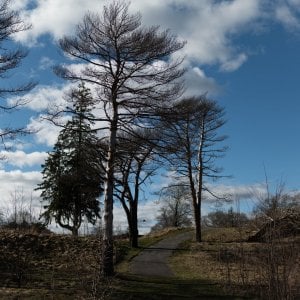
and I can push the file just over 2 stops before I get a tiny bit of clipping in the clouds.
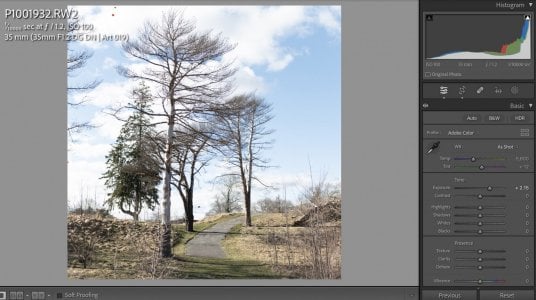
For example this is an ES shutter test at 1/10,[email protected].

and I can push the file just over 2 stops before I get a tiny bit of clipping in the clouds.

shawn
Mentor
That image is literally taken from an article titled "Shooting wide open in the sunlight with fast glass" which describes how to use a ND filter to avoid blowing out images. Would be a little silly to have photos in that article not shot wide open.For example, the photo of the little boy is not about the little boy. It’s more about the 105mm f1.4 and the “are you jealous about my gear or what” kinda vibe.
Archiver
Mentor
I was fine up until the mention of Granger, who I do not consider a good example of an established pro. Perhaps I'm biased because his earlier videos as That Nikon Guy were unabashed clickbait with extremely poor editing, and the one portrait session video I watched was a disaster of faffing around without any direction. I haven't watched his videos for many years, so maybe he's improved?Could somebody show us the failed results of somebody shooting +3ND, F/1.4 ISO, and time falling where they will?
What are you talking about?
Matt Granger, on YouTube, posted a clip where you can see how, what problems there are, and the result.
He is an established pro, knowing what he's doing. Do you like his shot?
It is all about vision and skills.
As far at shooting wide open all the time: I'm an unabashed fan of this style, although I adjust when necessary to get more of the subject in focus. In bright daylight, the most I'll go to is f8, usually f2.8, f4 or f5.6 normally. Otherwise it's f1.4 on a 35mm.
A
AndyCapp
Guest
I thought that we are free to use all times and openings as we please, add filters and play around.That image is literally taken from an article titled "Shooting wide open in the sunlight with fast glass" which describes how to use a ND filter to avoid blowing out images. Would be a little silly to have photos in that article not shot wide open.
Is this not the case any longer?
A
AndyCapp
Guest
Granger made his point, never mind your biases.I was fine up until the mention of Granger, who I do not consider a good example of an established pro. Perhaps I'm biased because his earlier videos as That Nikon Guy were unabashed clickbait with extremely poor editing, and the one portrait session video I watched was a disaster of faffing around without any direction. I haven't watched his videos for many years, so maybe he's improved?
As far at shooting wide open all the time: I'm an unabashed fan of this style, although I adjust when necessary to get more of the subject in focus. In bright daylight, the most I'll go to is f8, usually f2.8, f4 or f5.6 normally. Otherwise it's f1.4 on a 35mm.
"If you run out of rational arguments, attack the person".
Tim Murphy
Well-known
Dear Andy,Granger made his point, never mind your biases.
"If you run out of rational arguments, attack the person".
It looks like the teapot and kettle are having a private discussion.
There is no mention of ISO in the Granger video. As others have stated, most modern digital cameras provide +/- 3 stops of EC. Add in the fact that many cameras offer 2 additional stops via electronic shutter and it just looks like an advertisement to sell Cokin Filter kits to me.
YMMV
Regards,
Tim Murphy
Harrisburg PA
Share:
-
This site uses cookies to help personalise content, tailor your experience and to keep you logged in if you register.
By continuing to use this site, you are consenting to our use of cookies.


